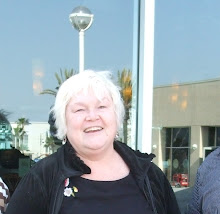
Second Life is addictive, creative, and social. While it may require basic knowledge of how things work to make the laws of nature different, it seems to have unlimited possibilities to reinvent yourself and the world in which you live, all for $1,000.00 down and a couple a hundred a month. Philip Rosedale, the man who created Second Life, in The Disruptive Power of Second Life says it is a bottom- up situation where digital people create, buy and sell digital items; it allows people the fundamental freedom to create. However, we may prefer our digital selves over our real selves. Regardless of the possible downsides, according to Rosedale it is unstoppable, inevitable, and disruptive.
It is much like the Internet and the Web in the early ‘90s. People can put themselves forth in the form of an avatar that is who they want to be, not who they are. It replaces cities, simulates space. Users create data that they can sell to earn real or digital money; people can build houses, businesses, and events anywhere. You can even have a baby, a digital baby, in Second Life. There is no structure to this game that is not a game. The economy of the game drives what people create; they want to sell their creations to exist in their virtual world.
Social creatures need others to learn, recommend, and experience information together. This may be the essence of constructivist learning. While this seems no more harmful than television in many ways for adults, is it applicable to people who are not adult learners?




